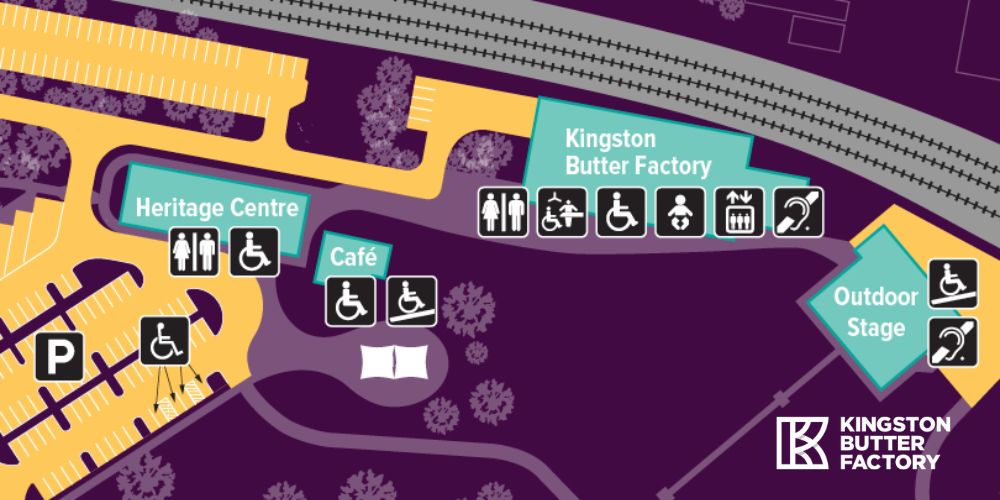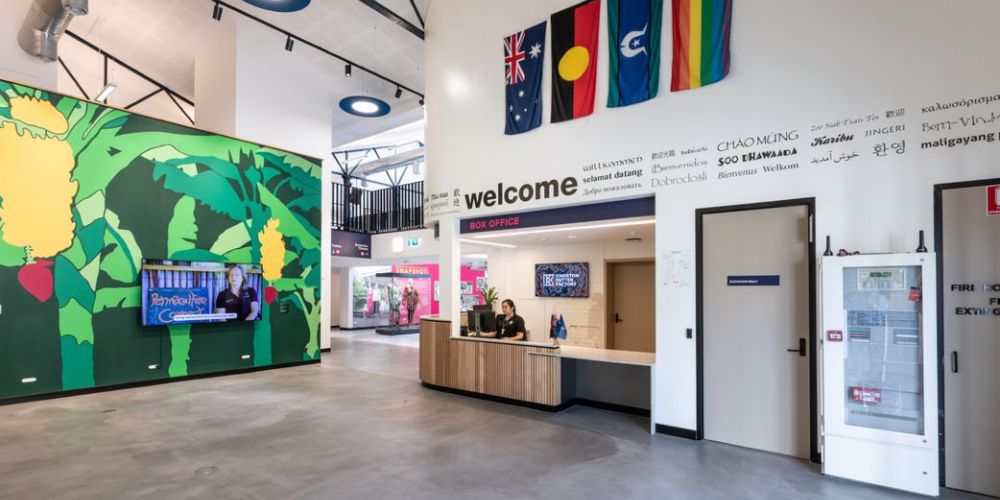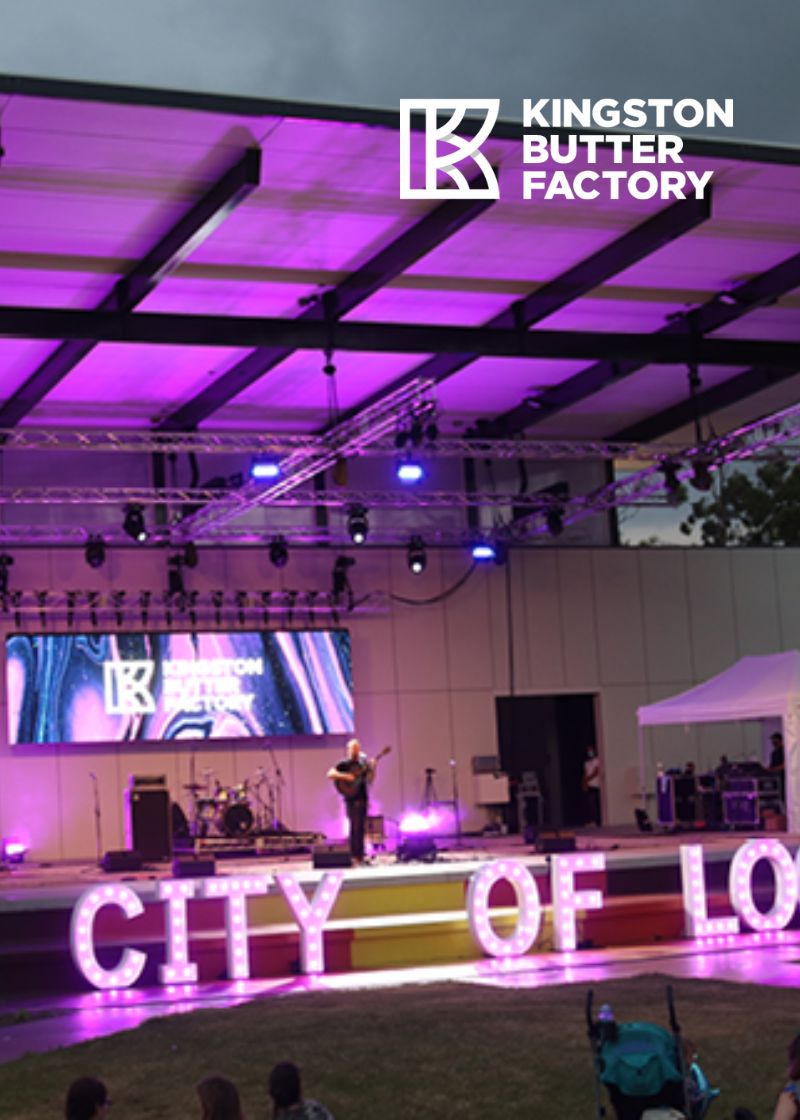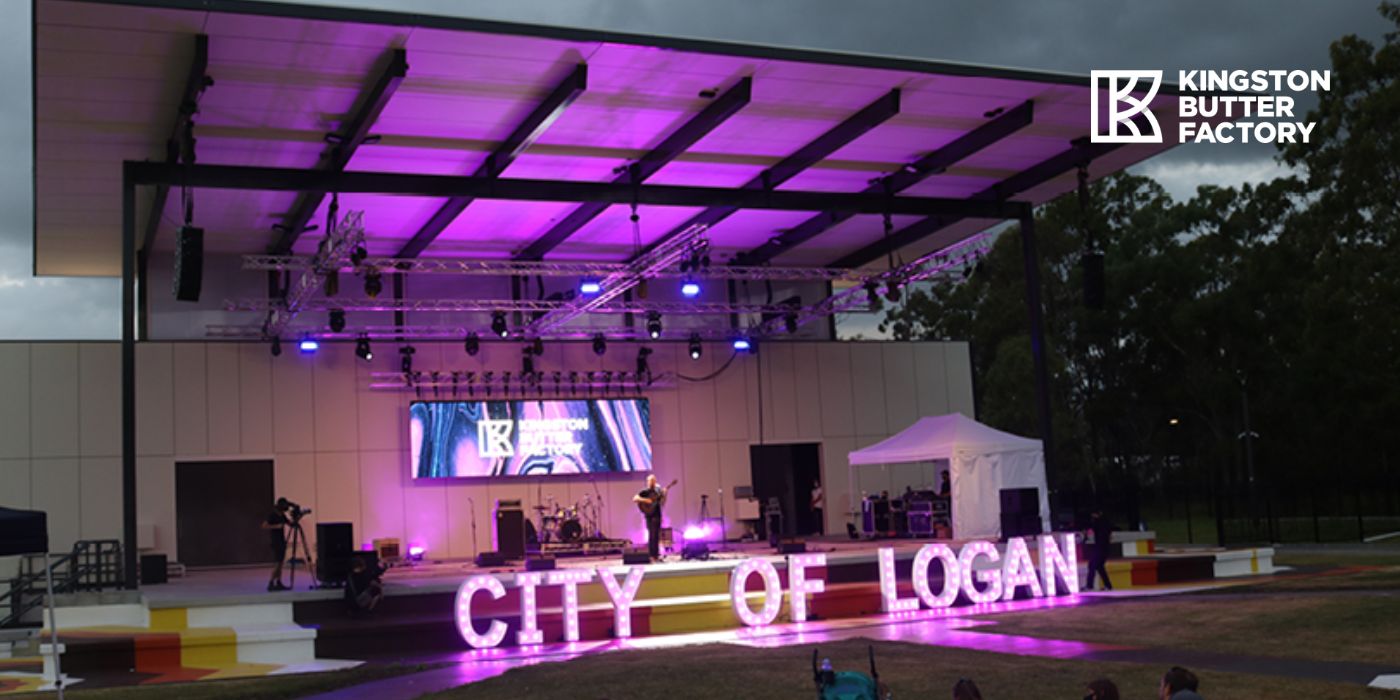In the wake of Kingston Butter Factory winning the inaugural QMusic Most Accessible Venue award, we sat down with Laura Bonner, Kingston Butter Factory's Programming Coordinator for a chat about the history of the venue, why accessibility was such a priority and what they have learned from the project.
About Kingston Butter Factory
Tell us about the current Kingston Butter Factory space?
“The Kingston Butter Factory is a contemporary space consisting of a black box theatre, a studio, mezzanine function space and is also home to Logan’s Living Museum of Logan which includes Logan’s first dedicated First Nations space, curated by our Creative Industries Department. Outside we have an onsite café, children’s play area and a large outdoor stage and festival site.”
Tell us a bit about the Kingston Butter Factory history?
“Kingston Butter Factory has a unique history. The original timber structured factory was built in 1907, with the railway sliding for the building added in 1911.
The brick building you can see today wasn’t built atop the old wooden structure until 1932. The factory made butter, milk, cottage cheese and baker’s cheese. In 1950s Paul’s purchased and operated the factory.
It was closed in 1983 and was transformed into a community arts centre in 1998. It closed for redevelopment and only reopened in its current format in April 2022. The current site of Devon Pixies, our onsite café, used to be the factory owner’s home – the original safe is still on site.”

Designing with Disability in Mind
Can you tell us why it was important to Kingston Butter Factory to keep disability at the forefront of the venue?
“Our aim is to foster an equal experience for everyone. After hearing firsthand about some experiences where people could not attend events due to lack of accessibility in some of the city’s venues, we knew that we had a unique opportunity to put accessibility at the forefront.
Working in a venue that already has a lot of welcoming infrastructure really inspires staff to continuously learn and implement other ideas to continue our welcoming vibe well beyond the building itself.
What were the considerations when designing the new space for those with disability?
Working with such a historical building added to the challenge of how space could be developed to be as inclusive as possible. The construction of the new venue had to remain within the footprint of the original building. One of the best features is that a lot of the features that are ‘accessible’ are not segregated but included in how anyone would use the building.”
Were any disability organisations contacted during the design process?
“The Community Services department conducted a community engagement campaign regarding accessibility to Logan with a focus on venues. Community consultation was very important during the re-development of the site.
For example, a local community member who used to visit the old site couldn’t get their mobility device into the old lift. This person, with their carers and family, worked with the construction team to help inform the current size of our lift, ramps, and entryways to ensure that larger sized mobility devices can be brought onsite. Our ramps are larger than the current standard sizes to help with turning circles, all our doorways are larger to accommodate.
The changing space bathroom also came from community consultation. A few people came forward to let us know how difficult it can be to toilet and change with dignity when out in public for adults who require assistance. Bathroom spaces are hard to increase and retrofit specialist equipment, so this was important to get right from the start.”
We noticed you provide information upfront to customers about the venue’s accessibility, such as where to park, what venues or entrances are accessible and even a video tour. Can you tell us more about the decisions behind making this information available online?
“Our audience’s experience often starts online. It’s our first point of contact with the public. The team are working hard to let people know from the start that they are welcome in our venue.
All patrons receive an email once they have purchased tickets about specific accessibility features we can offer for each event which includes social stories, pre-event venue tours, quiet spaces, Auslan interpreters, access to our hush room and more. We encourage people to contact us and discuss their experiences with us so that we continue to learn and grow to provide the best experience we can for our patrons.”

How to Create an Accessible Venue
As the inaugural recipient of QMusic’s Most Accessible Venue award, what is your advice to other venue operators for how to become more accessible?
“Just start! There is always more to do and more we can do – but make a start, make a wish list. Kingston Butter Factory still has a list of things we would like to implement, but we have made a start.
Accessibility also goes beyond the venue itself – at Kingston Butter Factory we also look at how accessible our venue is to diverse and emerging artists. Our Butterbox Beats live music programming is free for patrons to attend and most of our performances are “relaxed”.
Some of actions venues can take to improve accessibility do not impact budgets, like having social stories, inviting patrons in for venue tours, adding information in EDMs (electronic direct mail) on your venue’s features etc.”
If you could build another venue from scratch (no limit on budget), what else would you like to see incorporated in the future to make it more accessible?
“On top of the features at KBF, I think one of the most important learnings I would take forward with me into a new project would be to keep some budget to make improvements once you see the venue in use.
We couldn’t have predicted how many of our events would involve food trucks, which usually get placed at the back of the lawn – so pathways and ramps to make this more accessible would be amazing.
I would include more Braille and audio-description features, a dedicated sensory zone, venue-owned headphones for patrons to use, development for more accessible online platforms, more funding for programming and residencies of work create by and performed by artists who identify as having a disability.
It would be a dream of ours to also develop a program for helping artists break down the barriers in regard to grant writing.”
Kingston Butter Factory’s 5 Tips for a More Accessible Venue
- Foster an equal space for everyone
- Look for opportunities to work with existing infrastructure by enhancing the accessibility of current features
- Community consultation is key: those who access your venue already can provide great feedback to factor into planning.
- The experience starts online – let people know from the start that they are welcome in your venue
- Just make a start!
At CPL – Choice, Passion, Life, we firmly believe in the power of accessibility and inclusion for all people, regardless of their abilities. We recognise the immense impact that accessible venues have on fostering a sense of belonging and allowing people with disabilities to fully participate in the vibrant world of arts and culture.
That's why we were incredibly proud to partner with QMusic and present the Most Accessible Venue award to the Kingston Butter Factory, and their efforts to ensure they created an inclusive environment for everyone. Through their commitment to accessibility, they have transformed physical spaces and ensured equal opportunities for people with disabilities.

